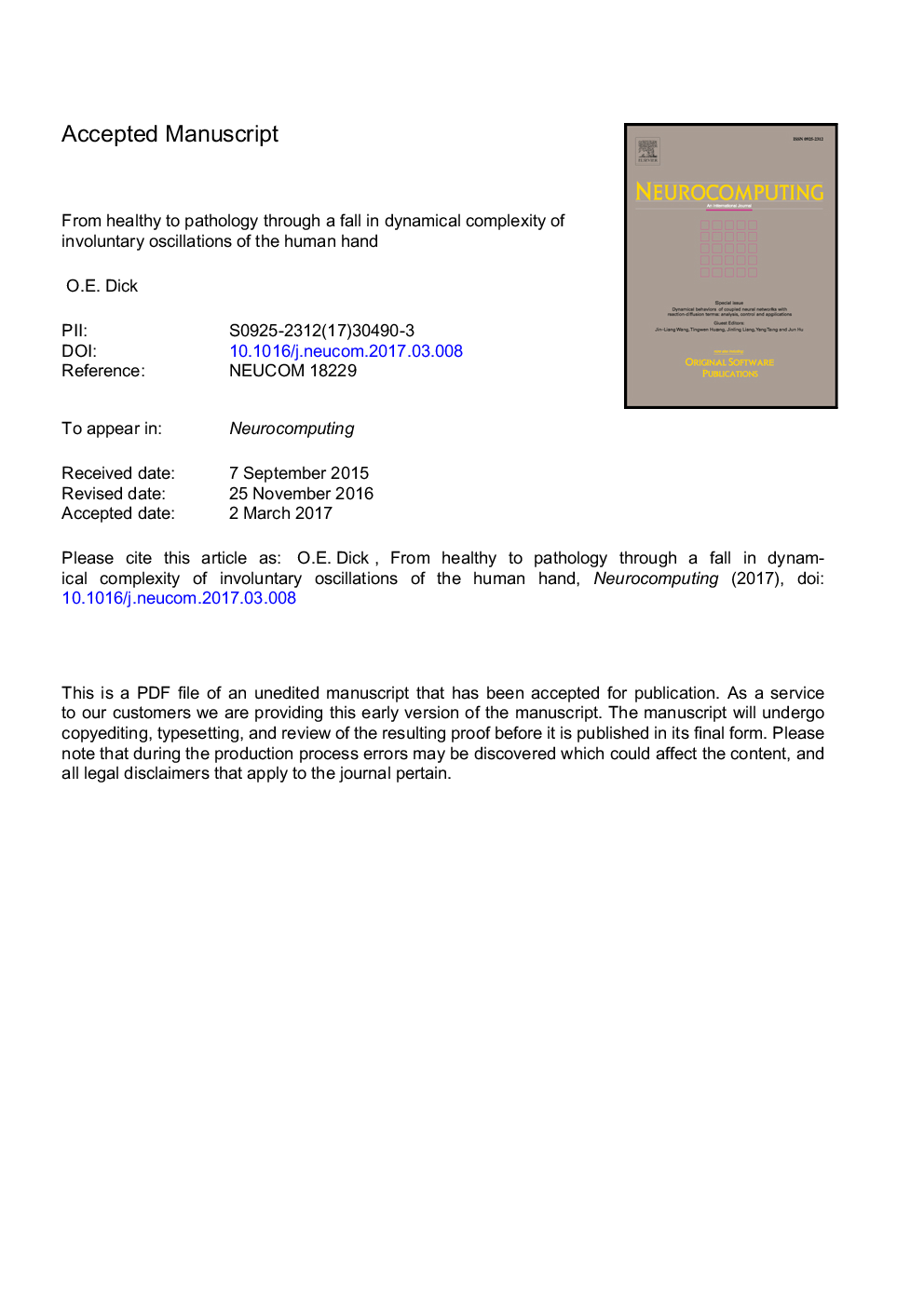| Article ID | Journal | Published Year | Pages | File Type |
|---|---|---|---|---|
| 4947506 | Neurocomputing | 2017 | 34 Pages |
Abstract
The task is to estimate quantitative features in involuntary oscillations of shaking (tremor) of fingers accompanied the performance of the motor task by healthy subjects, patients with Parkinson' disease and individuals with the essential tremor. For solving the task the tremor patterns are examined by the wavelet-transform modulus maxima method and the recurrence quantification analysis. The physiological tremor is characterized by the minimal energy of the wavelet spectrum, the maximal degree of multifractality, the minimal degree of determinism and the maximal recurrence time density entropy, reflecting the greatest uncertainty of the period value. During the essential tremor the significant enhancement of the wavelet spectrum energy and the decrease of the dynamical complexity of involuntary oscillations are observed. It is evident as the fall in the multifractality degree, the growth of determinism in recurrence plots, the decrease of the recurrence time density entropy and the emergence of unstable periodic orbits in involuntary oscillations. For the parkinsonian tremor all the trends are enhanced that lead to more definite dynamics of patterns. Therefore, our results demonstrate that the dynamical complexity of patterns of involuntary oscillations decreases in larger degree for Parkinson' disease, than for patients with the syndrome of the essential tremor, that is, it declines with increasing the severity degree of motor disorders. The results obtained for the first time can be applied for evaluating the degree of deviation of the motor function from the healthy one.
Related Topics
Physical Sciences and Engineering
Computer Science
Artificial Intelligence
Authors
O.E. Dick,
